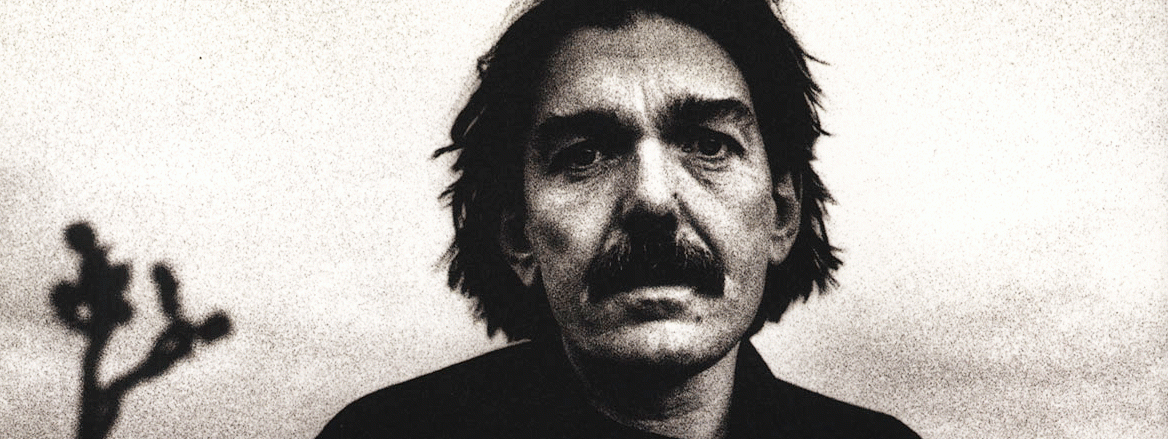In 1990, Kunsthallen Brandts Klaedefabrik organized a large retrospective exhibition Rockens Billeder (Images of Rock), which contained works of European and American artists from the previous three decades. The exhibition included works dealing with the theme of rock music, as well as works by painters who were also practising musicians. One of the most memorable expressive works at the exhibition was the 1986 painting Crepe and Black Lamps by Don van Vliet. The composition of the picture is glaringly asymmetrical, with rolling, light, fluid human figures lining the lefthand side of the canvas and a compact, blue-black female figure with a disproportionally large head standing in the right half of the picture. The naked woman is leaning forward, out towards the onlooker. She has a black, spiky punk hairstyle and red, dilated eyes. Her face is heavily lined and distorted like a mask concealing dark powers. Her entire being conveys a mixture of uncontrolled hatred and paralysed dread. This raven figure can be seen as Don van Vliet’s view of the world of rock and the picture as a whole as an expression of the artist’s experience of people and their relationships in general. At the exhibition Rockens Billeder it was also possible to look at a wide range of works by other artists who sang the praises of musicians and concert-life in their various ways Don van Vliet’s paintings probably provided the weightiest counterbalance to this eulogy. At the same time as Don van Vliet depicts the human stage with both fear and disdain like, for example, in Crepe and Black Lamps he also allows animals to invade the world of his motifs: huge, fearful beasts as well as tiny, gentle frisking creatures appear in ever greater numbers and begin to contend for space with the nerve-ridden humans in the artist’s canvases. In many instances his pictures become more harmonious and peaceful, although still full of life, when his expressive emblems are centred on animal motifs than when he has his fellow men – or rather his foemen – as his theme. In recent years the world of nature and animals has taken centre stage in his paintings.
It is natural to see Don van Vliet’s development as a pictorial artist as being closely linked to his life as a musician and a poet. This versatile person has often been characterised as an outsider or ‘loner’ in relation to the cultural establishment, something which seems obvious when his unusually high developed synaesthetic talents are taken into consideration. Van Vliet seems to have no inner boundaries between experiencing in words, sounds or images. Not only does he combine colours so that you can almost hear them; the titles of his pictures are sound images that interact – or associate -with his pictures, rather as the colour green and the sound of a tuba can be associated by an artistically gifted child with a day of the week, such as Wednesday.
It seems perfectly natural for a person with senses as open as Don van Vliet’s to have moved on from a highly extrovert art form like rock music to the more introvert and in one sense lonely world of pictorial art. For all his artistic work displays an ambiguity which creates tensions of mood that range from the ecstatic to the downright sinister. An ambivalent relationship to the outside world which must make it infinitely easier to work in solitude with brush and canvas, rather than surrounded by an audience. Painting allows Don van Vliet to immerse himself in the world of nature and animals with which he is so taken up; a far cry from the endless succession of monotonous hotel rooms and hordes of fans that are part of a rock musician’s life when on tour. When Don van Vliet paints, he pursues relentlessly his own deep experiences of the dichotomy between the beautiful, ordered chaos of nature and animal life on the one hand and the culture-distorted, morally degenerated world of man on the other.
The 1990 exhibition Rockens Billeder has presented Don van Vliet to a Scandinavian audience for the first time. It was in that context that Kunsthallen Brandts Klaedefabrik began to plan a larger separate presentation of this exciting artist to people visiting exhibitions in the Nordic countries. And so it is with great pleasure that we – in a cooperation with Galerie Michael Werner, Cologne, Bielefelder Kunstverein and The Royal Pavilion Art Gallery, Brighton – are now able to put his work on show on Danish soil.
-Karsten Ohrt, Director, Kunsthallen Brandts Klaedefabrik
